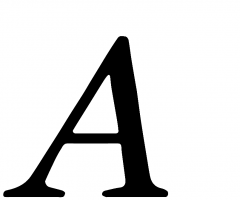Saira Viola is a pioneering writer of fiction and poetry who splits her time between Italy, London, and Baltimore. Her experimental ‘Sonic Scatterscript’ style has been critically acclaimed by the likes of Benjamin Zephaniah and Heathcote Williams. Viola’s two novels Jukebox and Crack, Apple, Pop are published by the fiercely independent Fahrenheit Press who celebrate ‘Fahrenbruary‘ this month. For this month’s blog post we asked Saira to list three of her literary influences…
Her experimental ‘Sonic Scatterscript’ style has been critically acclaimed by the likes of Benjamin Zephaniah and Heathcote Williams. Viola’s two novels Jukebox and Crack, Apple, Pop are published by the fiercely independent Fahrenheit Press who celebrate ‘Fahrenbruary‘ this month. For this month’s blog post we asked Saira to list three of her literary influences…
Dickens
Dickens has been a major influence and continues to provide me with a rich vein of source material to tap into. Few can equal Dickens when it comes to vibrant and eccentric characters, revealing the darkest of humours. Dickens has a Shakespearean heft and scale when describing villainy across the various strata of society. The characters bear the physical marks of a deformed society. Daniel Quilp, the shady money lender and ship breaker in The Old Curiosity Shop is a perfect example, with his ‘black sly eyes crooked long yellow nails,’ and ugly grin. He eats hard eggs shell and all and bites his fork and spoon until they are bent again. His protagonists experience a corresponding identity crisis as they struggle to reconcile the social conflicts that define their environment and inform their individual being. They provide a connection, a portal into the novel, to the reader who, even at this late date, experience much the same tensions. When I was ten, I was given a copy of Great Expectations. My family and I had recently settled in England after a blissful few years in Africa. I felt an outsider in English society alienated and alone, and so I immediately connected with the protagonist in the novel. Pip is unclear about his identity and desperate to leave the brutal poverty of his childhood and establish a new identity on the glittered streets of London. When I was mercilessly teased at school about where I came from Pip’s words struck a chord “It is a most miserable thing to be ashamed of home.”
William S. Burroughs
But for tone and style I turned to William Burroughs. I bought a copy of Naked Lunch during my angst ridden teens, going through a punkish phase. Reading Burroughs’ pyretic prose, for the first time was revelatory to me and ultimately freed me from self-imposed conventions I never even knew existed. The raw sex and violence inspired me to write without fear, to try a riskier style of prose. The poetic punch of Burroughs’ novels propelled the rhythmic style of my own work and much later, I developed and experimented with my own writing resulting in a style I dubbed ‘sonic scatterscript’.
Marvin Gaye
I am often drawn to art-forms outside of literature for models that suit my purpose. Which brings me to the importance of music. Certain musicians have been as important to me as the authors I admire, because the music of language is key. Take someone like Marvin Gaye, whose poetic street idioms, though deceptively simple, are weighted with great emotion and honesty. ‘What’s Going On?’ is a perfect example of Gaye’s song writing technique. The song is eternally fresh and manages to convey in only a very few lines the civil unrest and mood of dissent that characterised the end of the 60s. My favourite lines of the song are :
Picket lines and picket signs
Don’t punish me with brutality
But just talk to me
So you can see
What’s going on…
Thanks to Saira Viola for the pleasure of being her literary agents, and for providing us with February’s blog.
